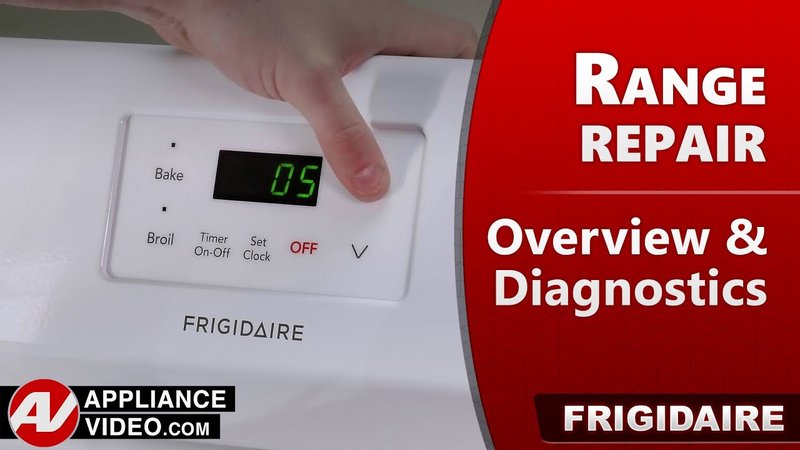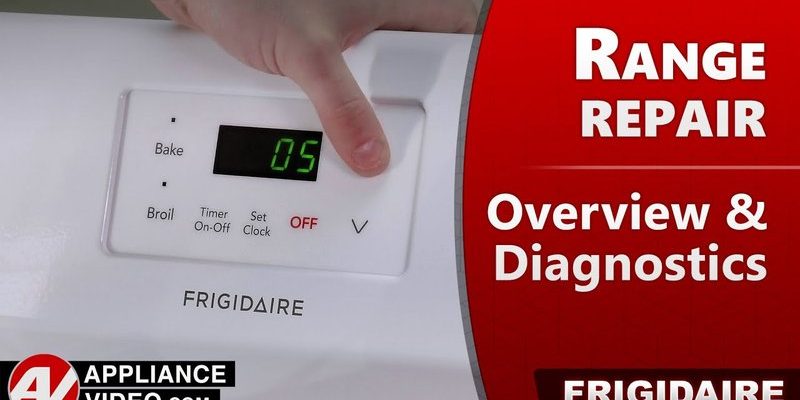
This particular E3 error code on your Frigidaire oven or range is more than just a random sequence of letters and numbers. It’s a signal that there’s something amiss under the hood, so to speak. Much like how a flashing check engine light in your car suggests that something needs attention, the E3 code is your appliance’s way of communicating that it’s not running as smoothly as it should. Ignoring it could lead to more than just a spoiled recipe. So, let’s dive into the nitty-gritty of what this code means, what might be causing it, and what steps you can take to fix it.
Understanding the E3 Error Code
The E3 error code is typically an indication of an issue with the oven’s temperature sensor. Imagine this sensor as the thermostat in your home but for your oven. It’s there to ensure your oven heats up to the right temperature for your cooking needs. When this sensor isn’t functioning correctly, it’s like trying to guess the room temperature without a thermometer. You might end up with an oven that’s too hot, too cold, or simply not consistent—which can spell trouble for your culinary creations.
If the sensor is faulty, it might send incorrect readings to the control board. This, in turn, can prevent your oven from preheating properly or maintaining the set temperature needed for your dish. Think of it like baking cookies where the recipe asks for 350°F, but your oven, due to a sensor error, is operating at 300°F or even 400°F. The end result? Burnt edges or raw centers—not exactly what you were going for.
So, when your oven flashes that E3 code, it’s not just a minor slap on the wrist; it’s a call to action. Ignoring it might lead to bigger problems down the road, like uneven cooking or even damage to other parts of your range.
Troubleshooting the E3 Error Code
Alright, so what should you do if you see this error code? First things first, try to stay calm. The E3 error is a common issue and can often be resolved with a bit of troubleshooting. Start by turning off your oven and unplugging it. Much like rebooting a computer when things go haywire, a simple restart can occasionally clear minor glitches in your oven’s system.
Next, check the temperature sensor. It’s usually located inside the oven cavity, at the back wall. You’ll need a multimeter to test if the sensor is working correctly. If you’re not familiar with multimeters, think of them as stethoscopes for your appliances—they help diagnose electrical issues. If the resistance reading is off, it might be time to replace the sensor. Fortunately, there are many detailed guides online that can walk you through the replacement process.
If after all this the E3 code persists, it might be time to call in a professional technician. Sometimes, the issue is more complex and involves the oven’s control board or wiring, which requires expert knowledge. Remember, it’s always better to seek help than to risk further damage or, worse, a potential safety hazard.
Preventative Measures and Final Thoughts
Now that you know what the E3 error code means and how to address it, let’s talk about prevention. Just like regular car maintenance helps prevent breakdowns, giving your oven a little TLC can keep it running smoothly. Regularly clean your oven to prevent buildup that can affect performance. Also, periodically check the temperature sensor for any visible signs of wear or damage.
When using your Frigidaire oven, try not to overload it with heavy pans or dishes. This can strain the sensor and the heating elements, causing them to work harder than necessary. Use cookware that’s appropriate for the size of your oven to ensure even heat distribution.
In conclusion, while it might be tempting to ignore the E3 error code, doing so can lead to more significant issues. Address it promptly for the sake of your meals and your appliance’s lifespan. Remember, taking small steps today can save you a lot of trouble tomorrow. Happy cooking!
